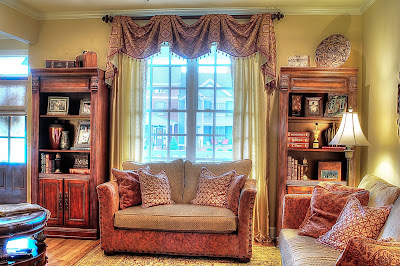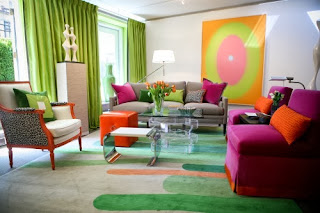Most people will tell you that their home is more than
just the place they lay their head. Your
home is where your family works, plays, loves, and lives! Your home is an
investment. It is not just an investment because of its monetary value, but
also its personal value. Hiring an
interior designer or decorator will maximize your potential to increase the
value of your home, yes…but also the personal investment of improving the
quality of your life in the spaces you spend your most valued time.
Many people find
themselves intimidated when hiring a professional decorator or designer. I hope
you never feel that way! Your home and your design style is about YOU;
therefore your designer should be about you!
There are a few tips we want to share in how to go about hiring a
designer that will make your renovation or decorating process more enjoyable
than you thought possible!
With a boo coo of
design challenges out there, it is no wonder we are turning to professionals.
Whether you are downsizing and trying to figure out the best way to fit your
furnishings from your suburban manse into your town condo, or finding your
ready-made drapes dwarfing in your newly built home, or if you have been in
your home since the 70’s and it looks like it…. we want to help you with
that! With the recent recession having
reacquainted us with the virtues of frugality, clients are determined to spend
decorating dollars wisely…. And guess what! Decorators and designers can, actually
help with that too. As designer, Mario
De Armas, has put it, “it’s not about how much you spend. It’s how you present
it.”
 |
| Window treatment designed and created by Creative Interiors. Client's furnishings original furnishing used throughout as much as possible. Sofas' upholstery and pillows were re-worked |
The least fun
aspect of hiring any service comes down to money; so, let’s go ahead and talk
finances and get it out of the way! You
always want to make sure you and your designer see eye to eye financially.
Spelling out fees and budgetary concerns up front will save you both headaches
down the road. There are many ways
decorators and designer may structure their fees. According to the American Society of Interior
Designers, there are three primary payment structures that are the most
common. The first being, a fixed, or
flat, fee for all services. Other
designers may simply charge an hourly rate.
Or they may ask for “cost plus”; in which case, they buy furnishings and
services at cost (or more commonly, discounted from retail prices) and they add
an agreed upon mark up. Many designers, depending on the job, may use a
combination of the fee types listed. For instance, they may ask for a fixed fee
during the planning phase and then cost-plus to execute. Be sure and check with your designer or
decorator to see if they require a deposit or retainer. Also, find out who will be paying for the
furnishings- do you pay upfront? Don’t
let money come between you and your designer!
Your relationship
with your designer or decorator is a special one. They get to know you and your
family, and how you function in your most personal space. With that said, your
designer’s personality should be compatible with yours. Make sure your designer
is someone you feel comfortable around. Likewise,
you are looking to work with a professional. Do they return your calls? Do they
show up on time? The stereotype of the artsy designer (fun, creative and even a
little flighty) is not unfitting. Who wants a stodgy, uptight decorator anyway?
However, customer service is one of the key indicators of satisfaction. So although
you want your designer to be fun, make sure they are organized and
professional. Your designer should also
take notes during your first few consults. They should be interviewing you as
much as you are them. Designer are
problem solvers. Getting a grasp on the scope of the project and the challenges
your job may present is their primary focus at the beginning. Don’t stress if
they are asking you a lot of questions, it’s a good thing!
 |
| Bedding designed and fabricated by Creative Interiors. Client's furnishings original furnishing used throughout as much as possible. |
It is true that
many designers have a signature look; however, a good designer should be able
to accommodate your tastes even if his or her personal style is completely
different. That said, you may be looking to grow your own personal style or
discover what “your style” is. When considering interior designers and
decorators, also consider how involved in the creative process you plan to be
and, what kind of guidance you need. Are
you looking to collaborate with a designer on creating your perfect space, or
are you looking for your designer or decorator to present complete décor
options to you? Are you open to
suggestions? If you already have images of graphic designer wall paper dancing
in your head, be prepared to communicate that to your designer. No matter how
much knowledge or experience your designer may have, you can be sure mind
reading is not a skill taught in design school. Keep in mind, your designer’s
unique approach may not mesh with your needs, making communication critical in
this area also.
As with any
professional, don’t be afraid to ask your prospective decorator or designer
about their experience, education and for referrals. This goes back to the idea that you are
looking for a professional, not someone who decorates as a hobby. These days you don’t have to look very far to
find a designer who has been formally educated. Working with a designer means that
you will have a professional that is trained and comfortable with spatial planning, and can help design and
renovate interiors, right from working with the architect or builder in drawing
up the initial floor plans to placing the last decorative accent. Designers are
proficient in enhancing the function of a room as well as the aesthetics,
making the end result beautiful and practical. Decorators are not required to have a formal
education while their experience may be indubitable. Decorators
generally come on board after a project is complete. They're hired to create a
look that will be comfortable and inviting. When determining the scope your
project, make sure your prospective designer/decorator’s credentials meet your
needs. By looking at their experience as well as their education, you may find
that the designer you are considering has experience in areas or lighting
design or kitchen design. Knowing you
can lean on their knowledge and understanding in these areas can be a big
relief in a big renovation project.
 |
| Media and Game Room, designed by Creative Interiors. |
I hope you take
away from this “how to” puts your mind at ease if you are considering hiring a
professional designer or decorator for your next home project. As with any
working relationship, communication is key. Whether its finances or your style
dreams don’t be afraid to put it out there. The bottom line is your designer is
there to make the experience of designing and decorating your home fun, and to
help make sure you see it all come to fruition! As put by Interior Designer,
Meredith Marlow, “Choose wisely and you will not regret it! The right designer
will save you time, money and a lot of frustration.”





































